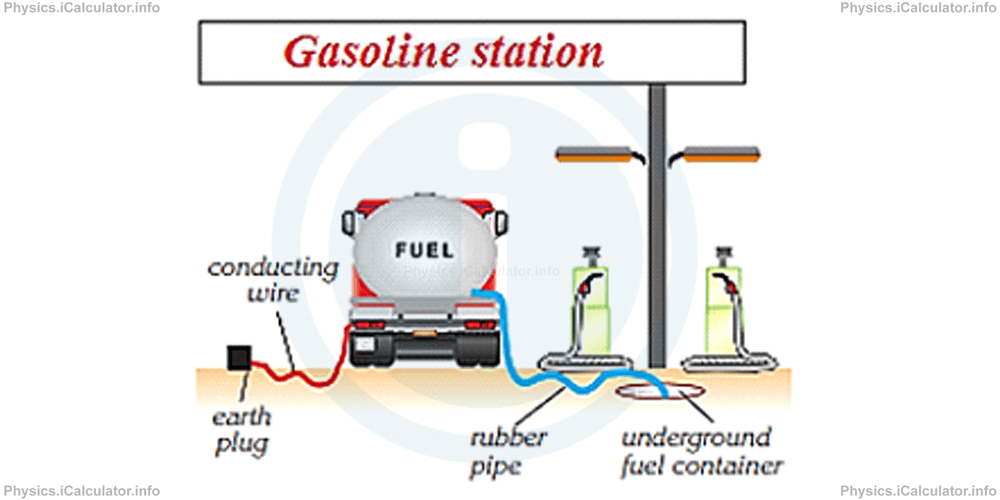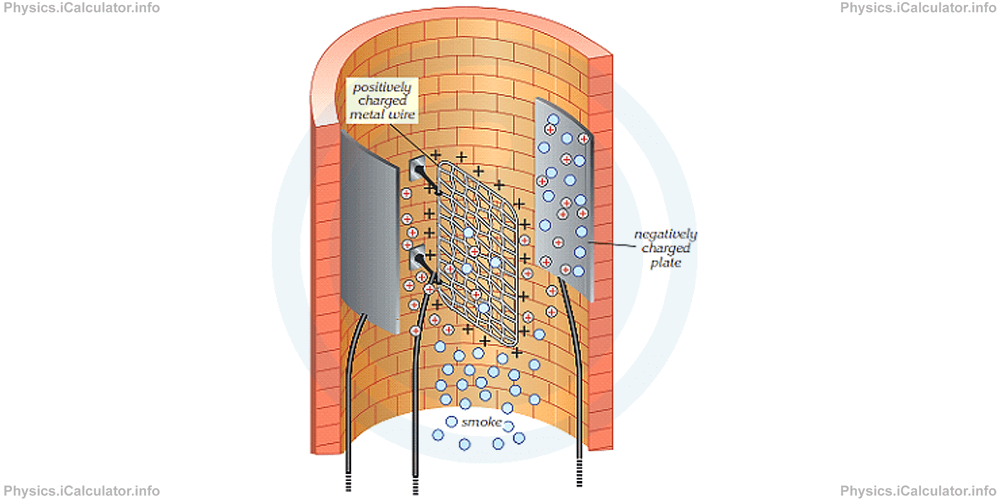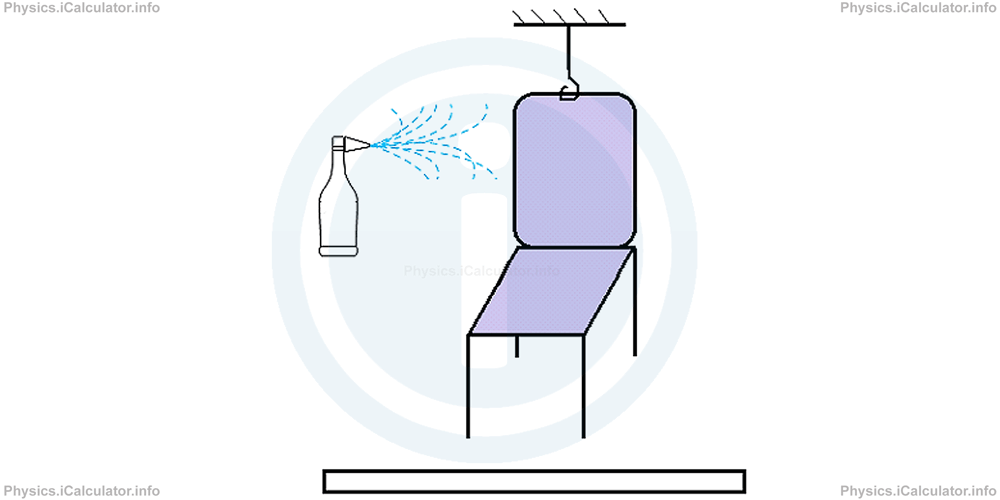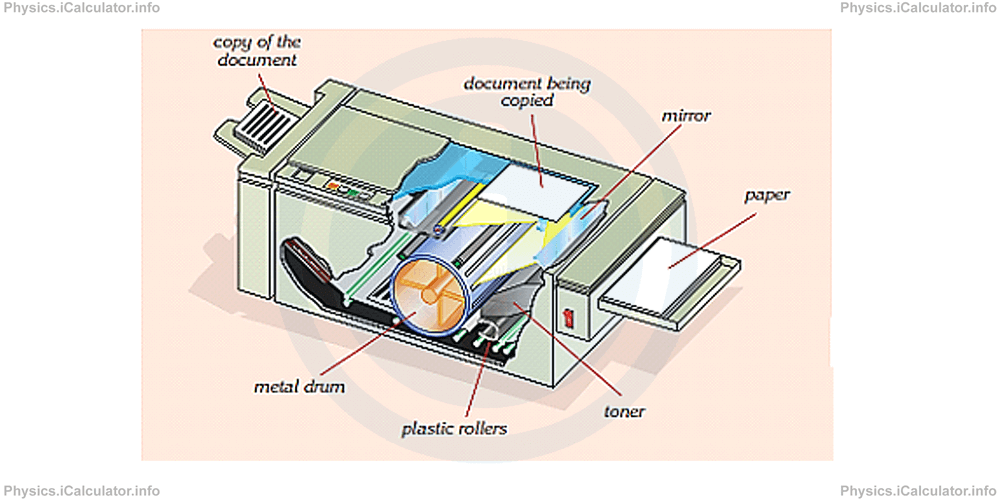Menu
Physics Lesson 14.1.8 - Applications of Electrostatics in Daily Life
Please provide a rating, it takes seconds and helps us to keep this resource free for all to use
Welcome to our Physics lesson on Applications of Electrostatics in Daily Life, this is the eighth lesson of our suite of physics lessons covering the topic of Electric Charges. Conductors and Insulators, you can find links to the other lessons within this tutorial and access additional physics learning resources below this lesson.
Applications of Electrostatics in Daily Life
There are not too many applications of electrostatic in daily life, as static charges are not able to do any mechanical work. However, a number of useful applications of electrostatics already exist. Some of them include:
a) Charging due to flow
Some inflammable liquids such as fuels can be charged due to friction while flowing through pipes. Since such liquids are inflammable, the flowing process can be very dangerous because if a spark occurs, a fire will start immediately. To prevent this, fuel trucks are always grounded through a conducting wire when they fill containers in a gasoline station. Likewise, airplanes are grounded when being refueled, in order to prevent unexpected explosions and fires.

b) Electrostatic precipitator
Electrostatic precipitator is a structure installed inside chimneys to prevent the smoke from turning back to the room because of air currents.

Two negatively charged plates are installed in the lateral sides of chimney and a positively charged grid at its central area. The smoke is caught up in the plates after passing through the grid and charged positively, as opposite charges attract each other. This prevent the smoke from turning back to the room when air currents blow outside.
c) Paint spray systems
Metal objects such as cars, chairs, etc., are painted using electrostatics. Thus, the object that needs to be painted is raised from the ground to avoid the grounding effect before starting the process. The nozzle of paint spray bottle is charged positively and the metal object is given a negative charge. In this way, when paint comes out in spray form from the nozzle, it is charged positively and is stuck better to the metal surface. This saves a lot of paint and makes the painted surface more uniform.

d) Photocopying machine
It is not the case to explain the whole procedure of how a photocopying machine works, but we can say its operation principle is an example of electrostatics application in technology. In few words, a photocopying machine includes a drum-shaped metal plate coated with selenium, which becomes conductive in light and insulator in darkness. The ink is also charged by opposite sign to the metal drum, and when dark and bright regions formed by the reflection of the original document are in contact with the selenium, they produce charged and neutral regions on the paper, which on the other hand is charged by rolling over the metal drum. In this way, the document not only will have the same look as the original, but this look will last for a long time as the printing process is more qualitative, because the ink sticks better on the paper, similarly to the quality obtained in paint spray systems we discussed earlier.

You have reached the end of Physics lesson 14.1.8 Applications of Electrostatics in Daily Life. There are 8 lessons in this physics tutorial covering Electric Charges. Conductors and Insulators, you can access all the lessons from this tutorial below.
More Electric Charges. Conductors and Insulators Lessons and Learning Resources
Whats next?
Enjoy the "Applications of Electrostatics in Daily Life" physics lesson? People who liked the "Electric Charges. Conductors and Insulators lesson found the following resources useful:
- Application Feedback. Helps other - Leave a rating for this application (see below)
- Electrostatics Physics tutorial: Electric Charges. Conductors and Insulators. Read the Electric Charges. Conductors and Insulators physics tutorial and build your physics knowledge of Electrostatics
- Electrostatics Revision Notes: Electric Charges. Conductors and Insulators. Print the notes so you can revise the key points covered in the physics tutorial for Electric Charges. Conductors and Insulators
- Electrostatics Practice Questions: Electric Charges. Conductors and Insulators. Test and improve your knowledge of Electric Charges. Conductors and Insulators with example questins and answers
- Check your calculations for Electrostatics questions with our excellent Electrostatics calculators which contain full equations and calculations clearly displayed line by line. See the Electrostatics Calculators by iCalculator™ below.
- Continuing learning electrostatics - read our next physics tutorial: Coulomb's Law
Help others Learning Physics just like you
Please provide a rating, it takes seconds and helps us to keep this resource free for all to use
We hope you found this Physics lesson "Electric Charges. Conductors and Insulators" useful. If you did it would be great if you could spare the time to rate this physics lesson (simply click on the number of stars that match your assessment of this physics learning aide) and/or share on social media, this helps us identify popular tutorials and calculators and expand our free learning resources to support our users around the world have free access to expand their knowledge of physics and other disciplines.